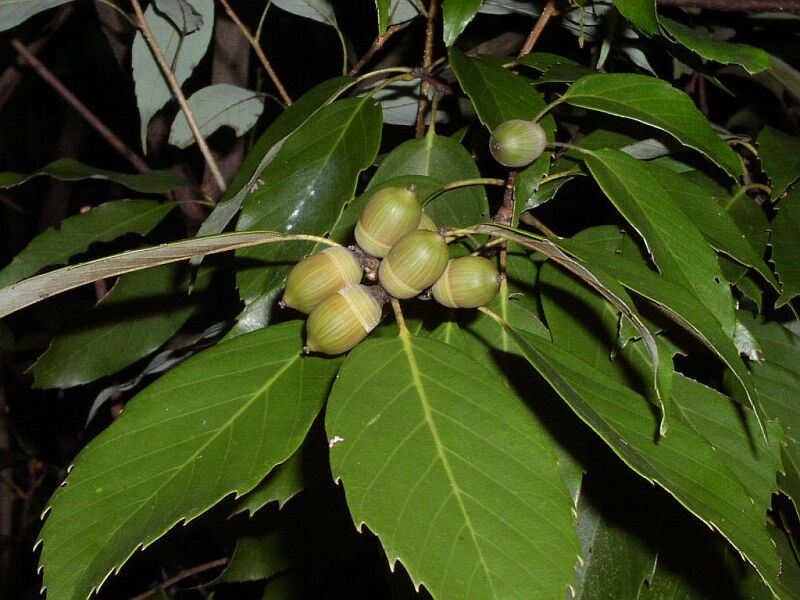
Quercus glauca (Bani)
Quercus glauca, locally known as Bani, is a broad-leaved evergreen oak species found in the lower and middle elevations of the Great Himalayan National Park (GHNP). Its leathery blue-green leaves and ecological adaptability make it a keystone species in the park’s mixed forests.
Habitat and Distribution in GHNP
This species thrives between 1,500 to 2,500 meters elevation and can be commonly found in:
-
Lower Tirthan and Sainj valleys
-
North-facing slopes with moist soils
-
Subtropical and lower temperate forest zones
Bani is often associated with Rhododendron, Myrica, Aesculus, and other oaks like Quercus leucotrichophora (Banj).
Key Botanical Features
-
Leaves: Thick, glossy, bluish-green on top and pale underneath
-
Bark: Smooth when young, becoming rough with age
-
Acorns: Ring-cupped and shed in autumn
-
Height: Medium-sized tree, typically 10–15 meters tall
Ecological Role
In the GHNP ecosystem, Quercus glauca:
-
Prevents soil erosion on steep slopes
-
Provides canopy cover, creating a cool, moist microclimate
-
Supports wildlife like squirrels, civets, and Himalayan birds through its acorns and shelter
Its evergreen nature helps maintain green cover year-round, critical for sensitive habitats in transitional altitudes.
| Local name | Bani |
| Botanical name | Quercus glauca |
| Family | Fagaceae |
| Description | It is a tree having young shoots and mature leaves beneath glabrous. Leaves pale and glaucous beneath always serrate, nerves straight. Scales of acorn united in rings. It is found at an altitude of 1500-2500m. |
| Flowers and Fruits | March-June |
| Distribution | It is commonly found in temperate forest, Tirthan valley. |
Traditional and Local Uses
Although harvesting is restricted inside GHNP, in surrounding areas locals traditionally use Bani for:
-
Fuelwood and charcoal
-
Fodder during dry seasons
-
Medicinal applications from bark and leaves (antiseptic properties)
Conservation Notes
GHNP’s protection policies ensure that Quercus glauca forests are:
-
Undisturbed by grazing or logging
-
Part of natural regeneration programs
-
Monitored for climate change impacts, particularly changes in precipitation and temperature patterns



